A short story of the World Inline Cup
Originally there was the Swiss cup of marathons, called the Swiss Inline Cup. In 2002 from that basis was born the World Inline Cup, the world cup of marathons. If at first the circuit gathered mainly European competitions, it reached an international dimension over the last years. Story...
Par alfathor
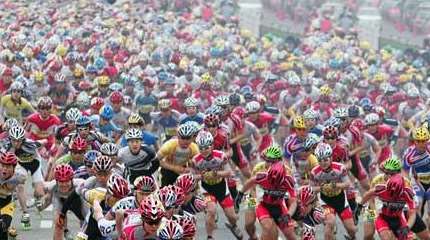
A structured world circuit: the World Inline Cup
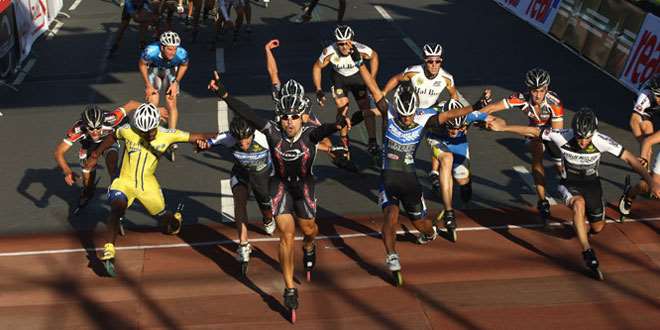 It is not easy to tell a non-exhaustive story of the World Cup of Marathons, the World Inline Cup, given the considerable number of subjects linked to it. Let’s try to give you an overview of its evolution from its birth on, not on the sports aspect but on its social and economic facets.
It is not easy to tell a non-exhaustive story of the World Cup of Marathons, the World Inline Cup, given the considerable number of subjects linked to it. Let’s try to give you an overview of its evolution from its birth on, not on the sports aspect but on its social and economic facets.
A private company behind the concept
The world circuit was born at the instigation of the Iguana company in 2002. If the first competitions were European, the booming of the Asian market over the last years led to label events in Korea and China.
Since 2009, there have also been competitions in South America. Columbia and Venezuela, countries where skating is strongly established, have joined the circuit of the world cup of marathons at last.
In Europe, the Eastern countries did not use to be very present, but now we see competitions organized in Czech Republic at Ostrava, at Gdank in Poland… Proof that even on the old continent some things remain to be done.
The cradle of origins, Switzerland
The Iguana company was born in Switzerland in 1994 at the instigation of Coni Altherr. The company started by organizing the Swiss Inline Cup. The first edition saw 150 skaters take the start. The concept boomed the following years, reaching 10.000 skaters in 1998. That same year, Iguana launched the European Inline Cup, the first circuit of marathons at an international scale.
From the EIC to the WIC
In 2000 was born the World Inline Cup as we know it today. In 2002, Iguana wished to apply the format which had made the success of the Swiss circuit to international competitions: The concept gathered international-level skaters and leisure skaters in a festive atmosphere. They were several thousands to take the start of the Swiss competitions of Sursee, Engadin, Bienne, Berne…
The operating principle
For each competition, Iguana relies on a local organizer wishing to label its competition. The event should meet international specifications and Iguana manages the marketing dimension and the communication of the event. The sum of the entrance rights paid by the organizer varies according to the type of the event they want to organize: “Class 1” or “Top Class”…
According to the chosen option, the event will see more or less international skaters and the competition will bring more or less points at the general ranking of the World Inline Cup.
The organization may use the WIC label in its communication and the event is added to the world schedule. Then it benefits from extra communication.
Moreover a race manager is sent on site by the WIC to check the compliance to the specifications and to make the proceedings of the race easier.
For information, here are the entry fees for the World Inline Cup:
- Class 1: Entry fee of 3.500 € and a minimum bonus of 5.000 € in 2010 (10.000 € before)
- Top Class: Entry fee of 20.000 € with 20.000 € bonuses for the skaters.
The competition of Dijon for example is Class 1 since 2002. The event used to take place in September, and it was at the same time as the World Championships.
Since 2004 and the shifting of the date to June, all the teams have come foward, except in 2007 and 2008 when the WIC of Incheon was held at the same dates.
Before, when you organized a top Class event, Iguana would come with a village with Rollerblade structure. It is not the case anymore today.
Change of hand
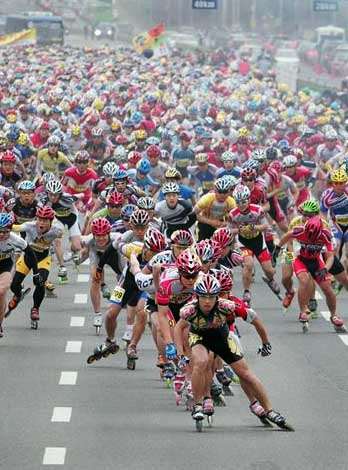 In 2005, Coni Altherr decided that his company and the market of skating needed new owners, which could be able to offer even more development and perspectives. In 2006, a new holding was organized: Global Sports Group Ltd (GSG). It acquired Iguana in its entirety, reaching a turnover of 3.6 millions of Swiss Francs (around 2.7 millions of Euros). All the aspects of the Swiss Inline Cup were then managed by that company: vehicles, tents, etc.
In 2005, Coni Altherr decided that his company and the market of skating needed new owners, which could be able to offer even more development and perspectives. In 2006, a new holding was organized: Global Sports Group Ltd (GSG). It acquired Iguana in its entirety, reaching a turnover of 3.6 millions of Swiss Francs (around 2.7 millions of Euros). All the aspects of the Swiss Inline Cup were then managed by that company: vehicles, tents, etc.
The use of those resources happened not to be optimal and too much focused on Switzerland, whereas the aim was to establish a leadership of the WIC at an international level.
Thus, in 2007 and 2008, a major reorganization of the company took place. The first step was for the Swiss Federation to take charge of the organization of the Swiss Inline Cup. In January 2008, all the events and their logistics were outsourced to a new company: Cate-e-Motion AG, of which Iguana owned 30% of the shares. Cate-e-Motion AG became the logistics partner of Iguana from the 2008 season on, while Iguana narrowed down its activities to the managing of the Swiss Inline Cup, to its marketing, the sales and the broadcasting of the event.
In August 2008, Cate-e-Motion AG was called upon to become the promoter of the SIC for Iguana, operating (exploiting) the Swiss tour and the events at their own risks and in exchange for guaranteed annual fees, but under the continuous property of the brand/concept and the surveillance of Iguana.
That transformation phase of Iguana, from the status of event organizer, to that of a structure purely in charge of marketing and to a holding owning the rights from the 2009 season on, proved to be sometimes painful and probably more expensive than what was originally planned.
Yet the principle seems to be good since now the company makes money and is better prepared to take new opportunities of development in Europe, in the Asian/Pacific area or in Latin America.
Since 2007, Iguana has gone even further in working on the German Inline Cup. The company has also tried to build bonds with the very young Asianic Inline Cup (AIC) to make the most of the impressive development of skating in Asia. Since the decision of non-inclusion of skating at the 2016 Olympics, Iguana seems to believe in and bet on the potential of the Asian Games.
France, a historic country of the WIC
In France, speed skating emerged quite early with competitions of international scale such as the 3 Tracks (3 Pistes) and Rennes Sur Roulettes, one of the oldest competitions of the WIC. 2012 was the 30th edition of the Breton race, which brings us back to… 1982! The first international marathon took place in 1987.
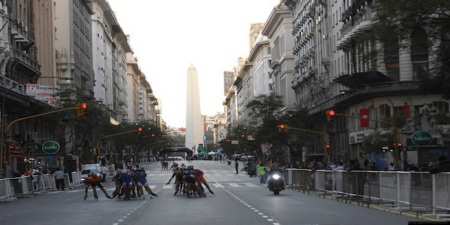
At the beginning of the 90’s, an embryonic circuit is organized with the France Tour of Loire. The seniors will remember the articles recounting the feats of Pascal Briand or Arnaud Gicquel in Roller Saga Magazine.
The World Inline Cup saw and still sees other competitions unfolding in France. The International Marathon of Dijon is, with Rennes, the second meeting that goes through the years.
Other competitions have unfortunately disappeared. At the beginning of the 2000’s, the world top skaters would race along the Promenade des Anglais in Nice. The City council put an end to the competition because there were too many sports competition in that place.
Let’s also remember the unique Eurodisney Marathon in Marne-la-Vallée, which saw the victory of Daniel Finster. It is a shame that nobody ever managed to create a competition worthy of the name in the capital, at the image of the mythical Marathon of Berlin.
The calling into question
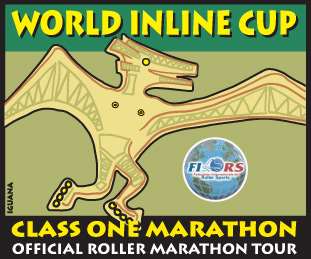 We have noticed that for a couple of years there has been a regular drop in the number of skaters taking the start at the World Cups of Marathons. Causes are numerous and often intermingled.
We have noticed that for a couple of years there has been a regular drop in the number of skaters taking the start at the World Cups of Marathons. Causes are numerous and often intermingled.
A drop in the number of leisure participants
First of all, the financial means of the leisure participants have reduced because of the current economic situation. The number of skating competitions they take part in per year has obviously suffered from it. Moreover, after a dozen years of systematically taking part in the same competitions, they may have grown weary.
Financial imbalance of the organizations
Thus the organizers whose financial balance depends on the mass of leisure competitors and not from that of the elites, see their revenues reducing. Then, they have less means to pretend to organize a WIC. Not being labelled anymore means that the public subventions will unavoidably be reduced, just as the media exposure of the race. The vicious circle is on.
Reduction of the marketing/communication budgets
Moreover, the crisis and the stagnation of the market limit the possibilities of investment of the brands at all levels.
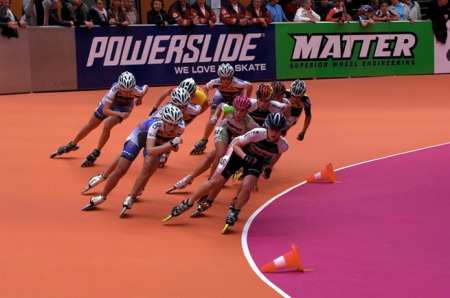 Marketing and communication are always the first sectors to be sacrificed by the brands at times of budgetary rigour. Big brands such as Kia don’t invest into skating anymore. The professional teams are sacrificed. They are alarmingly decreasing or even disappear. For example, Rollerblade long lined up several national and international teams. First the women’s formation disappeared and then it was the turn of the men’s. Same thing for Bont, the women’s and the international team were sacrificed in favor of local sponsoring often relying more on equipment than money.
Marketing and communication are always the first sectors to be sacrificed by the brands at times of budgetary rigour. Big brands such as Kia don’t invest into skating anymore. The professional teams are sacrificed. They are alarmingly decreasing or even disappear. For example, Rollerblade long lined up several national and international teams. First the women’s formation disappeared and then it was the turn of the men’s. Same thing for Bont, the women’s and the international team were sacrificed in favor of local sponsoring often relying more on equipment than money.
So that there are less and less professional teams at the starts of the races. The ‘World Inline Cup’ label loses its value. Before you were sure to find great packs at the beginning of the races, it is now less systematic, as we have noticed it in Rennes for two years. The drastic reduction of sponsors, whether linked to skating or not, combined to the crisis make of the WIC a convalescent concept. It partly explains why the original principle is called into question.
From now on, you don’t restrict yourself to the organization of a marathon and leisure races. Track competitions emerge in addition, just like in Pampeluna (Spain) or Geisingen (Germany). The aim is clearly to give a second wind to a circuit which seems to have already known its apex. The work of exposure made by Iguana also seems to have been emphasized, especially on the Internet. Let’s hope that the format will enable the circuit of the World Inline Cup to carry on…
Links
Overview of speed-skating and of speed circuits around the world
Translation: Chloé Seyres
Photos : all rights reserved
Thanks to Markus Ott for his help
